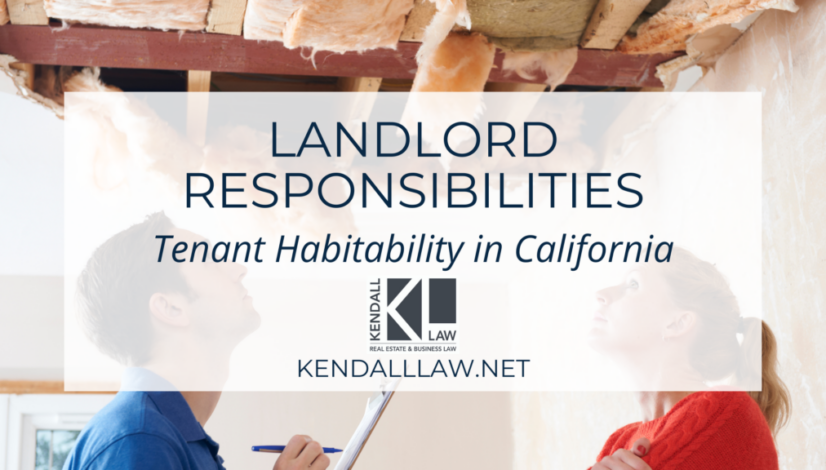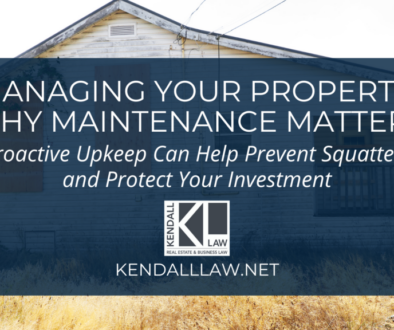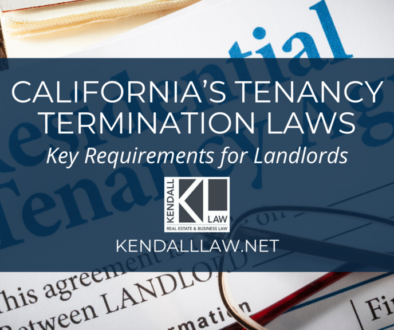Landlord Responsibilities: Ensuring Tenant Habitability and Managing Claims in California
In the California rental market, tenant habitability is a fundamental right that ensures safe and livable conditions for tenants. When landlords fail to meet their responsibilities to provide habitable premises, tenants have the option to assert their rights through tenant habitability claims. This article examines key aspects of tenant habitability claims in California, shedding light on tenant rights, landlord obligations, and the legal avenues available to address habitability issues.
Understanding Tenant Habitability
Tenant habitability refers to the legal requirement that rental properties meet certain minimum standards of safety, sanitation, and livability. These standards encompass various aspects of the property, including its structural integrity, utilities, sanitation facilities, and overall condition. Ensuring tenant habitability is crucial for fostering a healthy and respectful landlord-tenant relationship and promoting the well-being of renters.
Key Elements of Tenant Habitability
- Safe and Sanitary Conditions: Landlords are obligated to provide tenants with safe and clean living environments that are free from hazards, pests, and unsanitary conditions.
- Working Utilities: Basic utilities such as water, heat, electricity, and plumbing must be maintained in good working order and readily accessible to tenants.
- Structural Integrity: Rental properties must be structurally sound, with roofs, walls, floors, and foundations in good condition to prevent safety hazards.
- Maintenance and Repairs: Landlords are responsible for promptly addressing maintenance and repair requests to ensure that the property remains in habitable condition.
- Legal Requirements: Landlords must comply with all applicable building and health codes, as well as local ordinances that pertain to tenant safety and well-being.
Tenant Rights and Legal Avenues
- Withholding Rent: Under specific circumstances outlined in California law (Civil Code Section 1942), tenants may have the right to withhold rent or make necessary repairs themselves and deduct the costs from their rent if landlords fail to address habitability issues within a reasonable timeframe.
- Repair and Deduct: Tenants can undertake necessary repairs themselves, deduct the costs from their rent, and provide the landlord with proper notice and documentation of the expenses incurred.
- Constructive Eviction: In extreme cases of uninhabitable conditions, tenants may have grounds to claim constructive eviction. This occurs when the property becomes so unlivable that the tenant is effectively forced to vacate.
- Tenant Habitability Lawsuits: If habitability issues persist and negotiations fail, tenants may file a lawsuit against their landlord to seek damages and remedies for the habitability violations.
- Local Rent Control Ordinances: Some cities in California have rent control ordinances that outline specific habitability requirements and provide tenants with additional protections.
Landlord Responsibilities: Fulfilling Legal and Ethical Obligations
Landlords bear a crucial legal and ethical duty to ensure that the rental properties they offer to tenants are habitable. This obligation encompasses a range of responsibilities, including regular property maintenance, prompt repairs, and adherence to building codes and health regulations. By proactively addressing maintenance issues and promptly attending to repair requests, landlords not only uphold their legal obligations but also create a safe and comfortable living environment for their tenants.
Timely maintenance and repair efforts are paramount in preventing potential habitability claims from tenants. Neglecting these responsibilities can lead to serious consequences, including legal disputes and financial liabilities. Additionally, failure to maintain habitable living conditions may result in damage to the landlord’s reputation and diminished tenant satisfaction.
Therefore, it is imperative for landlords to prioritize property upkeep and promptly address any issues that may compromise tenant habitability. By staying informed about their legal responsibilities and proactively maintaining their rental properties, landlords can effectively mitigate risks and foster positive tenant-landlord relationships.
Conclusion
Tenant habitability claims are a vital tool for ensuring safe and livable conditions for renters in California. Tenants should be aware of their rights and options when facing habitability issues, and landlords must uphold their responsibilities to maintain the habitability of their properties. Open communication, timely repairs, and adherence to legal obligations are essential for fostering a positive landlord-tenant relationship and creating environments where tenants can thrive and landlords can maintain their properties’ value and reputation.
Connect with Kendall Law to handle habitability claims and get answers to your questions about your obligations as a landlord. Reach out to the team at Kendall Law today or call 310-619-4941 to schedule a consultation.
Please note that the information provided at this website is intended for general educational and informational purposes only, and should not be construed as legal advice or a substitute for legal advice from a qualified attorney in your jurisdiction.
Author: Eileen Kendall





